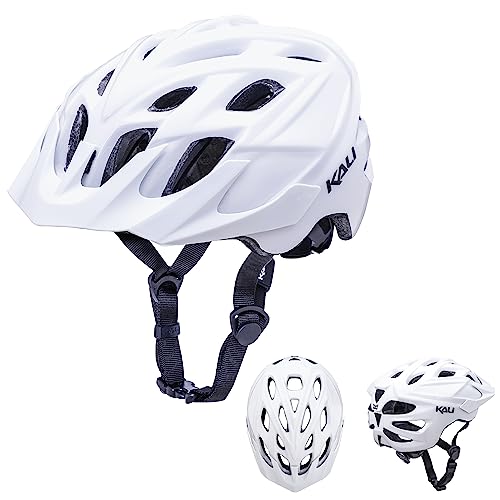Introduction
A scenario highlighting the importance of bicycle helmets
Picture this: A serene morning, the sun peeking over the horizon, as cyclists weave through bustling city streets or tranquil countryside lanes. Among them, a young rider confidently pedals along, wind in their hair, until an unexpected obstacle sends them tumbling to the ground. In that split second, the importance of a simple piece of gear becomes glaringly evident—the bicycle helmet.
Brief history of bicycle helmets
The bicycle helmet, often taken for granted today, has a rich and evolving history. Initially, helmets were mere adaptations of headgear used in other sports, lacking the specialized design necessary for optimal protection. It wasn't until the mid-20th century that the concept of a dedicated bicycle helmet began to take shape, spurred by growing awareness of head injuries in cycling accidents.
Early prototypes were rudimentary, offering minimal protection compared to modern standards. However, as research advanced and technology improved, so too did helmet designs. The evolution saw the integration of impact-absorbing materials, aerodynamic features, and rigorous testing protocols, culminating in the sleek, lightweight helmets widely available today.
Despite their ubiquity, bicycle helmets serve a multifaceted role beyond mere safety, impacting health, culture, and urban planning
Yet, the significance of bicycle helmets extends far beyond their primary function of safeguarding riders against head injuries. Despite their ubiquity, these helmets play a multifaceted role, influencing individual health outcomes, shaping cultural norms surrounding cycling, and even informing urban planning decisions. As we delve deeper into the realm of bicycle helmets, we uncover a tapestry of interconnected benefits that stretch beyond mere safety, painting a broader picture of their impact on society.
The Evolution of Bicycle Helmets
Early designs and their limitations
In the early stages of bicycle helmet development, designs were rudimentary and often lacked the sophisticated features necessary for optimal protection. These early helmets were typically constructed from basic materials such as leather, cork, or hard plastic, offering limited impact absorption capabilities. While they provided some level of protection against minor scrapes and cuts, they were ill-equipped to mitigate the forces associated with more serious head injuries.
Technological advancements leading to contemporary designs
As awareness of the importance of head protection grew, so too did efforts to enhance the design and effectiveness of bicycle helmets. Technological advancements played a pivotal role in this evolution, with innovations in materials science, engineering, and aerodynamics driving significant improvements in helmet performance.
One of the most notable advancements was the introduction of expanded polystyrene (EPS) foam, a lightweight yet highly effective material for absorbing impact energy. This revolutionary material allowed for the creation of helmets that could better mitigate the forces of a collision, significantly reducing the risk of head injuries.
Contemporary helmet designs also incorporate features such as ventilation systems, adjustable fit mechanisms, and streamlined profiles to enhance comfort and usability without compromising safety. Furthermore, advancements in manufacturing techniques, such as in-mold construction, have enabled the production of helmets that are both lightweight and durable, further enhancing their appeal to cyclists of all levels.
Standards and regulations: Ensuring safety and quality
In parallel with technological advancements, the establishment of rigorous safety standards and regulations has played a crucial role in ensuring the quality and effectiveness of bicycle helmets. Organizations such as the Consumer Product Safety Commission (CPSC) in the United States and the European Committee for Standardization (CEN) in Europe have developed standards that helmets must meet to be deemed safe for use.
These standards outline requirements for impact protection, retention systems, peripheral vision, and other critical factors. Helmets that meet these standards are subjected to rigorous testing procedures to evaluate their performance under various conditions, providing consumers with confidence in their safety and reliability.
By adhering to these standards, manufacturers can ensure that their helmets offer consistent levels of protection and quality, helping to prevent avoidable head injuries and bolstering trust among cyclists worldwide.
Safety: Beyond the Basics
Statistical evidence on the effectiveness of helmets in preventing head injuries
Empirical data overwhelmingly supports the efficacy of bicycle helmets in reducing the risk and severity of head injuries. Numerous studies have demonstrated that wearing a helmet can significantly lower the likelihood of sustaining traumatic brain injuries, skull fractures, and other serious head traumas in the event of a crash.
For instance, research published in the Journal of the American Medical Association (JAMA) found that helmet use was associated with a 69% reduction in the risk of head injury and a 65% reduction in the risk of severe brain injury among cyclists involved in crashes. Similarly, a meta-analysis conducted by the Cochrane Collaboration concluded that helmets were associated with a 63% reduction in the risk of head and brain injuries.
These findings underscore the critical role that helmets play in protecting cyclists from the potentially devastating consequences of head trauma, highlighting their importance as a fundamental component of cycling safety.
Discussion on helmet design features for enhanced safety
While the overarching goal of bicycle helmets is to reduce the risk of head injuries, not all helmets are created equal. The effectiveness of a helmet depends not only on its use but also on its design features and construction.
Modern helmet designs incorporate a range of features aimed at enhancing safety and comfort. These include:
Impact-absorbing materials: Helmets typically feature a layer of expanded polystyrene (EPS) foam that absorbs and dissipates the energy of an impact, reducing the forces transmitted to the wearer's head.
Extended coverage: Some helmets are designed with extended coverage around the sides and back of the head, providing additional protection against rotational forces and impacts from different angles.
Adjustable fit systems: Helmets often feature adjustable retention systems, such as dial-based mechanisms or adjustable straps, allowing cyclists to customize the fit for optimal comfort and stability.
Ventilation: Adequate ventilation is crucial for preventing overheating and discomfort during extended rides. Many helmets incorporate strategically placed vents to promote airflow while maintaining structural integrity.
MIPS technology: Some helmets feature Multi-directional Impact Protection System (MIPS) technology, which is designed to reduce rotational forces on the brain during oblique impacts, further enhancing protection.
By incorporating these design features, manufacturers strive to create helmets that offer superior protection and comfort, ultimately encouraging widespread adoption among cyclists.
Myths vs. realities: Addressing common misconceptions about helmet usage
Despite the overwhelming evidence supporting the effectiveness of bicycle helmets, several misconceptions persist regarding their usage. One common misconception is that helmets are unnecessary for casual or slow-speed riding. However, research indicates that the majority of cycling-related head injuries occur at relatively low speeds, underscoring the importance of helmet use regardless of cycling intensity.
Another misconception is that helmets can prevent all head injuries. While helmets are highly effective at reducing the risk of certain types of head trauma, they cannot eliminate the risk entirely. Cyclists should still prioritize safe riding practices, including obeying traffic laws, staying vigilant, and avoiding risky behaviors, to further mitigate the risk of accidents.
By dispelling these myths and promoting accurate information about helmet usage, we can encourage more cyclists to prioritize their safety and embrace the protective benefits that helmets provide.
Health Benefits
Physical health: Encouraging regular exercise and reducing sedentary lifestyles
In today's increasingly sedentary society, incorporating regular physical activity into daily routines is essential for maintaining optimal health and well-being. Cycling, a low-impact form of exercise, offers numerous health benefits, including improved cardiovascular fitness, muscle strength, and flexibility. By promoting the use of bicycle helmets, we not only enhance safety but also encourage more people to embrace cycling as a means of staying active.
Regular cycling has been associated with a reduced risk of chronic diseases such as obesity, diabetes, and cardiovascular disease. By making cycling a regular part of their routine, individuals can improve their overall fitness levels and reduce their risk of developing sedentary-related health conditions.
Furthermore, cycling is a convenient and accessible form of exercise that can be integrated into daily activities such as commuting to work, running errands, or simply enjoying leisurely rides through the neighborhood. By choosing to cycle instead of driving or taking public transportation, individuals can incorporate physical activity into their daily lives without the need for dedicated gym sessions or structured workout routines.
Psychological well-being: Boosting confidence and reducing stress
In addition to its physical benefits, cycling can also have a profound impact on mental health and psychological well-being. Engaging in regular physical activity has been shown to reduce symptoms of anxiety and depression, improve mood, and enhance overall psychological resilience.
Cycling provides an opportunity for individuals to disconnect from the stresses of daily life, immerse themselves in the present moment, and enjoy the freedom of movement afforded by two wheels. Whether it's a solo ride through scenic countryside trails or a group excursion with friends, cycling can be a source of joy, relaxation, and rejuvenation.
Wearing a bicycle helmet not only protects against potential head injuries but also instills a sense of confidence and security, allowing cyclists to fully immerse themselves in the experience without fear of harm. This confidence can translate into other areas of life, empowering individuals to take on new challenges, explore unfamiliar terrain, and push their boundaries.
Role in preventing long-term injuries and disabilities
While the immediate focus of bicycle helmets is on preventing acute head injuries, their long-term impact extends far beyond the initial incident. Head injuries sustained in cycling accidents can have lasting consequences, including cognitive impairments, physical disabilities, and reduced quality of life.
By wearing a helmet, cyclists can significantly reduce their risk of sustaining severe head trauma, thereby mitigating the potential for long-term injuries and disabilities. This proactive approach to safety not only protects individuals from immediate harm but also safeguards their future health and well-being.
Furthermore, preventing head injuries through helmet use helps to alleviate the burden on healthcare systems and reduces the socioeconomic costs associated with long-term medical care, rehabilitation, and disability support services. By investing in preventive measures such as helmet promotion and education, we can create safer environments for cyclists and minimize the long-term impact of cycling-related injuries on individuals and society as a whole.
Cultural and Societal Impact
Perception of helmet usage: Cultural norms and stigma
The perception of helmet usage varies greatly across different cultures and communities, shaped by a combination of social norms, attitudes toward risk, and legislative measures. In some regions, wearing a bicycle helmet is viewed as a sensible safety precaution, while in others, it may be seen as unnecessary or even undesirable.
Cultural norms surrounding helmet usage can influence individual behavior and societal expectations regarding safety practices. In communities where helmet use is normalized and encouraged, cyclists may feel more inclined to wear helmets as a matter of course, regardless of legal requirements. Conversely, in cultures where helmet usage is less prevalent or actively discouraged, cyclists may face social pressure or stigma for choosing to wear helmets.
Addressing these cultural attitudes and perceptions requires a multifaceted approach, including education, advocacy, and community engagement. By raising awareness of the benefits of helmet usage and challenging misconceptions about safety gear, we can shift cultural norms toward greater acceptance and support for helmet-wearing behavior.
Role in promoting cycling culture and community engagement
Despite the challenges associated with cultural attitudes toward helmet usage, bicycle helmets play a crucial role in promoting cycling culture and fostering community engagement. By providing a visible symbol of safety and responsibility, helmets help to instill confidence in cyclists and encourage greater participation in cycling activities.
Moreover, the act of wearing a helmet can serve as a catalyst for community dialogue and collaboration around cycling safety issues. Community-based initiatives such as helmet giveaways, safety workshops, and group rides can help to promote awareness of helmet usage and build solidarity among cyclists of all ages and backgrounds.
In addition to promoting individual safety, cycling culture and community engagement have broader social benefits, including improved public health outcomes, reduced traffic congestion, and enhanced quality of life. By creating inclusive and welcoming environments for cyclists, communities can reap the rewards of increased physical activity, social interaction, and environmental sustainability.
Economic implications: Healthcare costs, productivity, and environmental benefits
From an economic perspective, the widespread adoption of bicycle helmets can have far-reaching implications for healthcare costs, productivity, and environmental sustainability. Head injuries sustained in cycling accidents can result in significant medical expenses, rehabilitation costs, and lost productivity due to disability or long-term impairment.
By preventing head injuries through helmet use, communities can reduce the burden on healthcare systems and minimize the economic costs associated with treating cycling-related injuries. Moreover, by promoting cycling as a safe and accessible mode of transportation, communities can encourage more people to choose active forms of travel, thereby reducing traffic congestion, air pollution, and greenhouse gas emissions.
Furthermore, the promotion of cycling culture and community engagement can stimulate local economies through increased tourism, retail sales, and investment in cycling infrastructure. By prioritizing the needs of cyclists and creating bike-friendly environments, communities can unlock the economic potential of cycling as a sustainable and inclusive mode of transportation.
In summary, bicycle helmets not only protect individual cyclists from head injuries but also play a vital role in shaping cultural attitudes, fostering community engagement, and driving economic prosperity. By recognizing the broader societal impacts of helmet usage, communities can work together to create safer, healthier, and more vibrant environments for cyclists and non-cyclists alike.
Urban Planning and Infrastructure
Integration of helmet promotion into urban planning initiatives
As cities strive to promote cycling as a sustainable and healthy mode of transportation, the integration of helmet promotion into urban planning initiatives is essential for ensuring the safety and well-being of cyclists. Urban planners have a unique opportunity to incorporate helmet promotion strategies into broader transportation policies and infrastructure projects, thereby encouraging widespread adoption of safe cycling practices.
One approach is to incorporate helmet promotion campaigns into existing public health initiatives and educational programs aimed at promoting active lifestyles and reducing the burden of preventable injuries. By partnering with local health authorities, advocacy groups, and community organizations, urban planners can raise awareness of the importance of helmet usage and provide resources and support to encourage compliance.
Furthermore, urban planners can collaborate with cycling advocacy groups and transportation agencies to develop targeted interventions aimed at increasing access to affordable helmets for cyclists of all ages and socioeconomic backgrounds. This may include initiatives such as helmet subsidy programs, helmet recycling and distribution centers, and partnerships with retailers to offer discounts on helmet purchases.
By integrating helmet promotion into urban planning initiatives, cities can create environments that support and encourage safe cycling practices, ultimately improving public health outcomes and reducing the incidence of cycling-related injuries and fatalities.
The role of bike-sharing programs and city-wide cycling networks
Bike-sharing programs and city-wide cycling networks play a pivotal role in promoting cycling as a viable mode of transportation and enhancing urban mobility. These initiatives provide residents and visitors with convenient access to bicycles for short-distance trips, reducing reliance on private vehicles and mitigating traffic congestion and air pollution.
Incorporating helmet promotion into bike-sharing programs is essential for ensuring the safety of cyclists using shared bicycles. Many bike-sharing systems already include provisions for helmet rental or purchase at docking stations, providing users with the option to borrow or purchase helmets along with their bicycles. Additionally, cities can incentivize helmet use among bike-share users through discounts, promotional offers, and educational campaigns.
City-wide cycling networks, comprising dedicated bike lanes, shared paths, and cycling infrastructure, are critical for creating safe and accessible environments for cyclists of all ages and abilities. Urban planners can prioritize the development of cycling infrastructure in transportation planning and infrastructure projects, thereby improving connectivity and promoting cycling as a viable mode of transportation.
Challenges and opportunities in creating bike-friendly cities
Despite the numerous benefits of promoting cycling and helmet usage, cities face several challenges in creating bike-friendly environments. These challenges may include limited funding and resources for infrastructure projects, competing priorities for urban space, and resistance from motorists and other road users.
However, these challenges also present opportunities for innovation and collaboration among stakeholders. By leveraging partnerships with government agencies, private sector organizations, and community groups, cities can pool resources and expertise to overcome barriers to cycling infrastructure development and promote helmet usage.
Furthermore, emerging technologies such as smart mobility solutions, bike-sharing apps, and digital mapping tools offer new opportunities for enhancing the safety and convenience of cycling in urban environments. By harnessing the power of data and technology, cities can improve the efficiency of cycling infrastructure planning, optimize routes, and enhance the overall cycling experience for residents and visitors alike.
In conclusion, integrating helmet promotion into urban planning initiatives, expanding bike-sharing programs, and investing in city-wide cycling networks are essential steps toward creating bike-friendly cities that prioritize the safety and well-being of cyclists. By addressing challenges and seizing opportunities, cities can build sustainable, healthy, and inclusive urban environments that support active transportation and enhance quality of life for all.
Education and Advocacy
Importance of educational campaigns for helmet awareness
Educational campaigns play a crucial role in raising awareness about the importance of helmet usage and promoting safe cycling practices among cyclists of all ages and experience levels. These campaigns provide valuable information about the benefits of wearing helmets, the risks associated with cycling without proper head protection, and the importance of choosing helmets that meet safety standards.
By targeting diverse audiences through various channels, including schools, workplaces, community events, and social media platforms, educational campaigns can reach a broad spectrum of cyclists and non-cyclists alike. They can also address common misconceptions and barriers to helmet adoption, such as concerns about comfort, fit, and fashion.
Furthermore, educational campaigns can empower individuals to make informed decisions about their safety and equip them with the knowledge and skills necessary to advocate for helmet usage within their communities. By fostering a culture of safety and responsibility, these campaigns contribute to creating environments that support and encourage helmet-wearing behavior.
Role of advocacy groups in promoting helmet usage
Advocacy groups play a vital role in promoting helmet usage and advocating for policies and initiatives that support cycling safety. These groups serve as champions for cyclists' rights and safety, lobbying policymakers, organizing community events, and raising public awareness about the importance of helmet usage through grassroots efforts.
Advocacy groups work tirelessly to promote helmet-friendly legislation, such as mandatory helmet laws and helmet subsidy programs, that aim to increase access to helmets and encourage widespread adoption among cyclists. They also collaborate with government agencies, industry partners, and healthcare providers to develop and implement comprehensive strategies for promoting cycling safety and helmet awareness.
Moreover, advocacy groups provide valuable support and resources to cyclists, including information about helmet selection, fitting, and maintenance, as well as access to discounted helmets and educational materials. By mobilizing their networks and harnessing the power of collective action, advocacy groups can effect positive change and create safer environments for cyclists in their communities.
Strategies for encouraging helmet adoption among different demographics
Encouraging helmet adoption among different demographics requires targeted strategies that address the unique needs, preferences, and barriers faced by diverse groups of cyclists. Some effective strategies include:
Tailored messaging: Developing culturally sensitive and linguistically appropriate messaging that resonates with specific demographic groups, such as children, seniors, commuters, and recreational cyclists.
Community outreach: Engaging with local community organizations, schools, workplaces, and recreational groups to promote helmet usage through educational workshops, safety demonstrations, and outreach events.
Incentive programs: Offering incentives such as discounts, rebates, or free helmet giveaways to encourage helmet adoption among underserved populations or low-income communities.
Collaboration with influencers: Partnering with local celebrities, athletes, and influencers who can serve as role models and advocates for helmet usage, particularly among youth and young adults.
Customized solutions: Developing innovative solutions such as adjustable-fit helmets, stylish designs, and customizable options that cater to the unique needs and preferences of different demographic groups.
By employing these strategies and engaging with diverse stakeholders, we can effectively promote helmet adoption and create safer cycling environments for everyone. Through education, advocacy, and community empowerment, we can work together to make helmet usage a cultural norm and reduce the incidence of cycling-related head injuries.
The Future of Bicycle Helmets
Innovative designs: Smart helmets, impact detection technology, and customization options
The future of bicycle helmets is poised for exciting advancements, driven by innovations in technology, materials science, and design. One promising area of development is the integration of smart technologies into helmet design. Smart helmets equipped with sensors, GPS tracking, and communication capabilities have the potential to enhance safety and functionality for cyclists.
These helmets can detect and alert cyclists to potential hazards on the road, such as approaching vehicles or sudden changes in traffic conditions. They can also provide real-time feedback on riding behavior, including speed, distance, and route information, helping cyclists make informed decisions and improve their overall riding experience.
Furthermore, customization options such as adjustable fit systems, interchangeable components, and personalized design features are becoming increasingly popular, allowing cyclists to tailor their helmets to their individual preferences and needs. From color choices and graphic designs to padding thickness and ventilation configurations, customization options empower cyclists to create helmets that not only offer optimal protection but also reflect their personal style and identity.
Addressing accessibility and affordability issues
While innovative helmet designs offer exciting possibilities for improving safety and performance, addressing accessibility and affordability issues remains a critical challenge. In many communities, access to high-quality helmets is limited by factors such as cost, availability, and awareness.
To overcome these barriers, efforts are underway to develop affordable helmet options that meet safety standards without compromising quality or performance. This includes initiatives such as helmet subsidy programs, bulk purchasing agreements, and partnerships with manufacturers to produce affordable helmets specifically tailored to the needs of underserved populations.
Additionally, community-based programs and advocacy efforts are working to raise awareness about the importance of helmet usage and provide resources and support to encourage helmet adoption among diverse demographic groups. By prioritizing accessibility and affordability, we can ensure that all cyclists have access to the protective gear they need to ride safely.
Potential regulatory changes and future trends in helmet usage
Looking ahead, we can expect to see continued efforts to strengthen regulatory standards and promote helmet usage through legislation and public policy initiatives. This may include measures such as mandatory helmet laws, enhanced enforcement of existing regulations, and incentives for helmet adoption and compliance.
Furthermore, as cycling continues to grow in popularity as a mode of transportation and recreation, we can anticipate increased demand for helmets that offer superior protection, comfort, and style. Manufacturers are likely to respond to these trends by developing innovative new designs that prioritize safety while meeting the evolving needs and preferences of cyclists.
In summary, the future of bicycle helmets holds great promise for advancements in safety, technology, and accessibility. By embracing innovative designs, addressing affordability issues, and promoting regulatory changes, we can ensure that cyclists of all ages and backgrounds have access to the protective gear they need to ride safely and confidently into the future.
The Bicycle Helmet
In conclusion, bicycle helmets play a multifaceted role in promoting cycling safety and shaping healthier, safer communities. From their fundamental function of protecting against head injuries to their broader impact on health, culture, and urban planning, helmets are indispensable tools for cyclists of all ages and abilities.
Throughout history, bicycle helmets have evolved from rudimentary designs to sophisticated pieces of protective gear, incorporating advanced materials, technologies, and customization options. Yet, their significance extends far beyond mere safety. Helmets encourage regular exercise, boost psychological well-being, and prevent long-term injuries and disabilities, contributing to healthier lifestyles and communities.
Moreover, bicycle helmets serve as symbols of responsibility and solidarity within cycling culture, fostering a sense of community and engagement among cyclists worldwide. By prioritizing helmet usage and supporting initiatives that promote cycling safety, we can create environments that encourage active transportation, reduce traffic congestion, and improve public health outcomes.
As we look to the future, the ongoing evolution of bicycle helmets holds great promise for advancements in safety, accessibility, and innovation. By embracing new designs, addressing affordability issues, and advocating for regulatory changes, we can ensure that all cyclists have access to the protective gear they need to ride safely and confidently.
In closing, I urge readers to prioritize helmet usage and support initiatives that promote cycling safety in their communities. Whether it's advocating for helmet-friendly legislation, participating in educational campaigns, or simply setting a positive example by wearing a helmet on every ride, each of us has a role to play in shaping a future where cycling is safe, accessible, and enjoyed by all. Together, we can build healthier, safer communities for generations to come.







